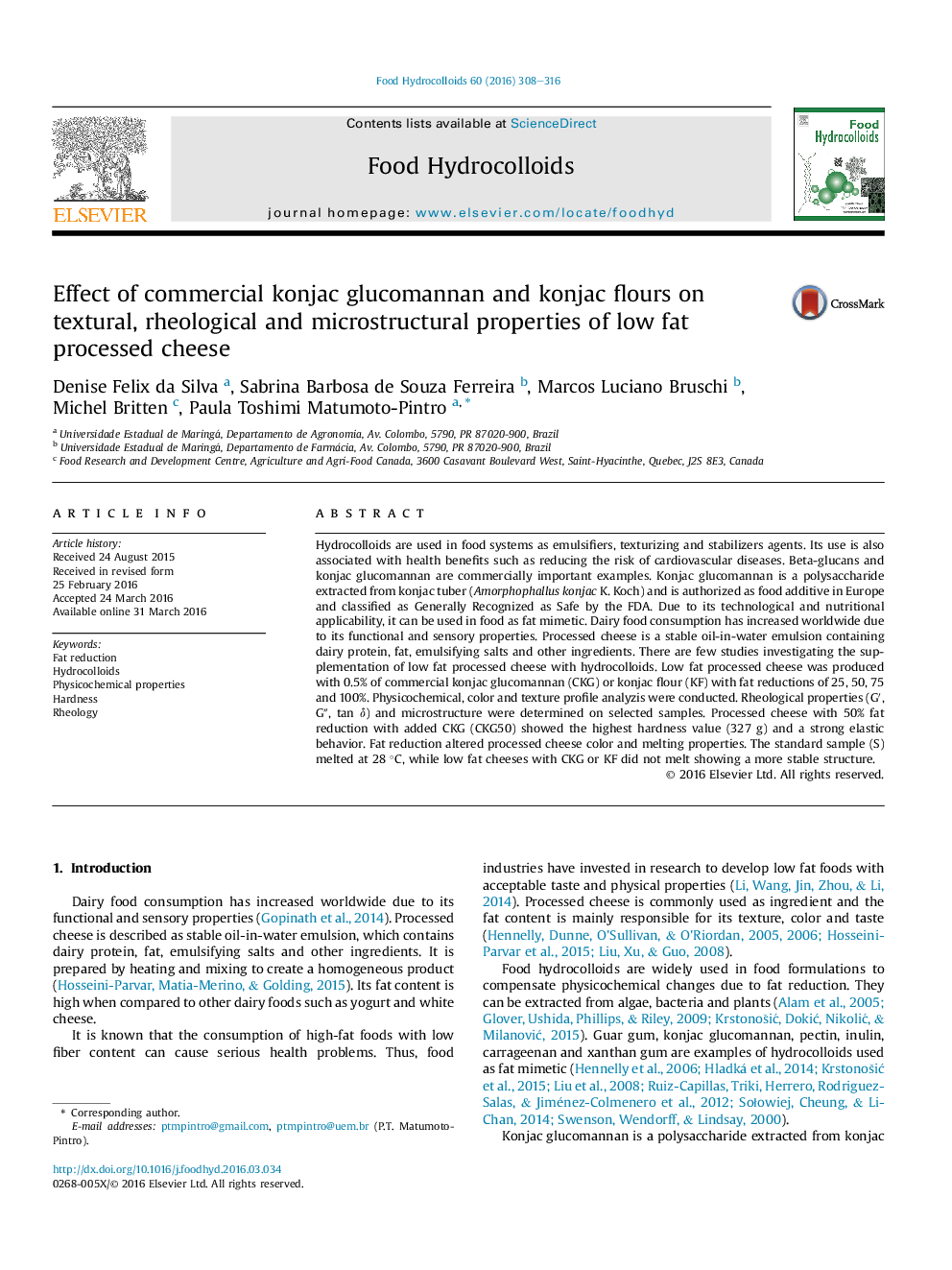| کد مقاله | کد نشریه | سال انتشار | مقاله انگلیسی | نسخه تمام متن |
|---|---|---|---|---|
| 603581 | 1454417 | 2016 | 9 صفحه PDF | دانلود رایگان |
• Commercial konjac glucomannan (CKG) strengthened low fat processed cheese network.
• Konjac flour (KF) can be used as emulsifier in low fat processed cheese.
• Fat reduction altered processed cheese color and melting properties.
• Addition of CKG or KF improved the stability of low fat processed cheese.
Hydrocolloids are used in food systems as emulsifiers, texturizing and stabilizers agents. Its use is also associated with health benefits such as reducing the risk of cardiovascular diseases. Beta-glucans and konjac glucomannan are commercially important examples. Konjac glucomannan is a polysaccharide extracted from konjac tuber (Amorphophallus konjac K. Koch) and is authorized as food additive in Europe and classified as Generally Recognized as Safe by the FDA. Due to its technological and nutritional applicability, it can be used in food as fat mimetic. Dairy food consumption has increased worldwide due to its functional and sensory properties. Processed cheese is a stable oil-in-water emulsion containing dairy protein, fat, emulsifying salts and other ingredients. There are few studies investigating the supplementation of low fat processed cheese with hydrocolloids. Low fat processed cheese was produced with 0.5% of commercial konjac glucomannan (CKG) or konjac flour (KF) with fat reductions of 25, 50, 75 and 100%. Physicochemical, color and texture profile analyzis were conducted. Rheological properties (G′, Gʺ, tan δ) and microstructure were determined on selected samples. Processed cheese with 50% fat reduction with added CKG (CKG50) showed the highest hardness value (327 g) and a strong elastic behavior. Fat reduction altered processed cheese color and melting properties. The standard sample (S) melted at 28 °C, while low fat cheeses with CKG or KF did not melt showing a more stable structure.
Figure optionsDownload as PowerPoint slide
Journal: Food Hydrocolloids - Volume 60, October 2016, Pages 308–316
